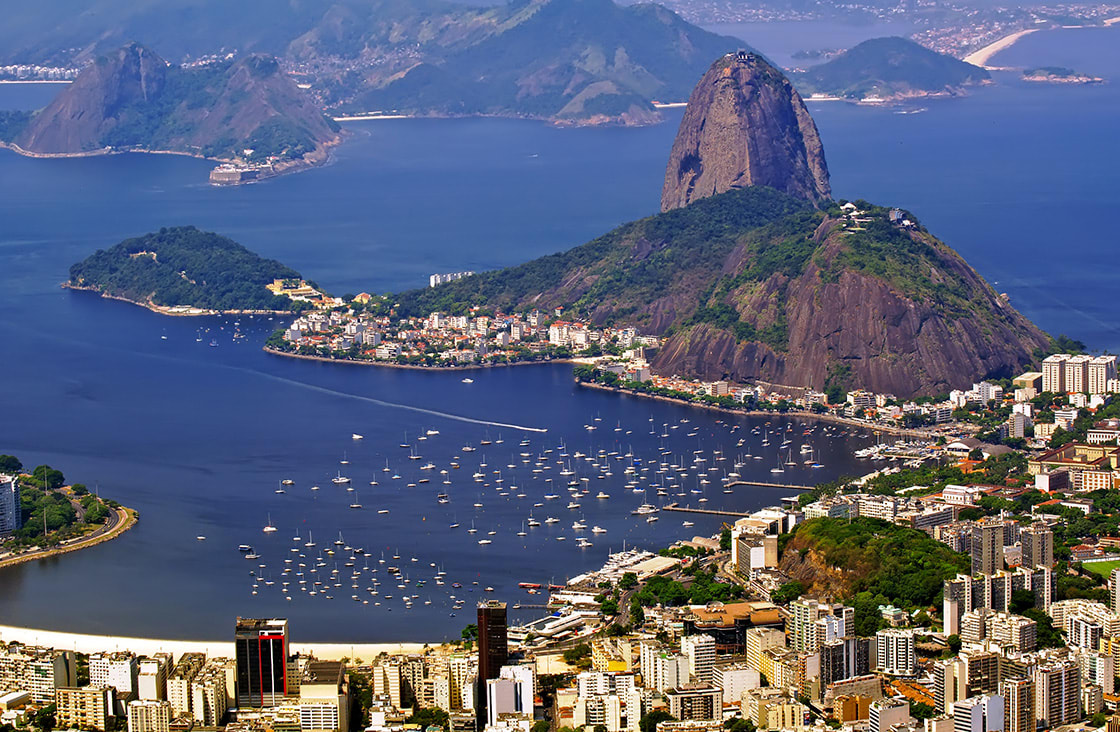
Brazil is the largest country in South America, dominating the central and eastern portions of the continent. From the massive and legendary Amazon Rainforest in the north to the jaw-dropping tropical beaches along the Atlantic coast to the Pantanal wetlands, there are plenty of marvelous Brazilian vacation destinations, where you’ll see some of the most beautiful nature in the world. Here is an insight into some of the most amazing places to visit in Brazil.
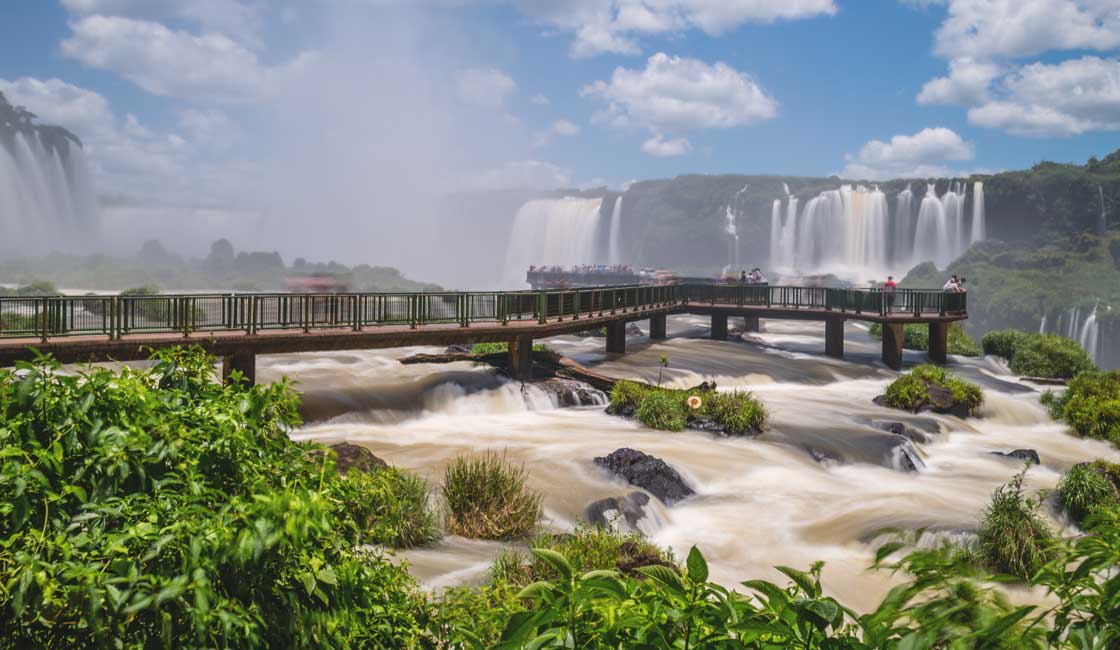
Iguazu viewpoint
The Iguazu Falls are the largest system of waterfalls in the world, stretching almost 9,000 feet in width. This impressive natural phenomenon straddles the Argentine-Brazilian border and is made up of hundreds of powerful cascades that tumble down into the fast-moving body of water below. Every second, incalculable gallons of water from the Iguazu River course over the Parana Plateau. While 80 percent of the falls are in Argentina, it is the Brazilian side that offers the most spectacular views, with Devil’s Throat canyon being the highlight. Take a bus to the trailhead, where you can then walk a short trail to come face to face with a full panoramic view of the giant waterfalls. Then go the full Brazilian on a walking tour along the catwalks. Hear the falls resonating through the rainforest and revel in the full spectacle. Walk to the balcony of the ominously named Devil’s Throat; shaped like a horseshoe, and including 14 waterfalls, this is the largest, most impressive, and dramatic water curtain in the whole system.
The 365 islands that make up Angra dos Reis are located in the southwest region of Rio de Janeiro. The biggest of these islands, Ilha Grande, has an illustrious history and some beautiful natural features, including the sweeping views from Pico do Papagaio, and the Castelhanos Lighthouse, which is one of the oldest in Brazil. If you’re into snorkeling and diving, you can explore the clear waters and coral reefs of Lagoa Azul, and see a multitude of marine creatures. If you’re feeling adventurous, you can hike through the jungle to the Cachoeira da Feiticeira, a 50-foot-tall waterfall with a natural pool at the bottom, where you can rappel down the steep cliff’s edge and swim in the pool beneath the cascade.
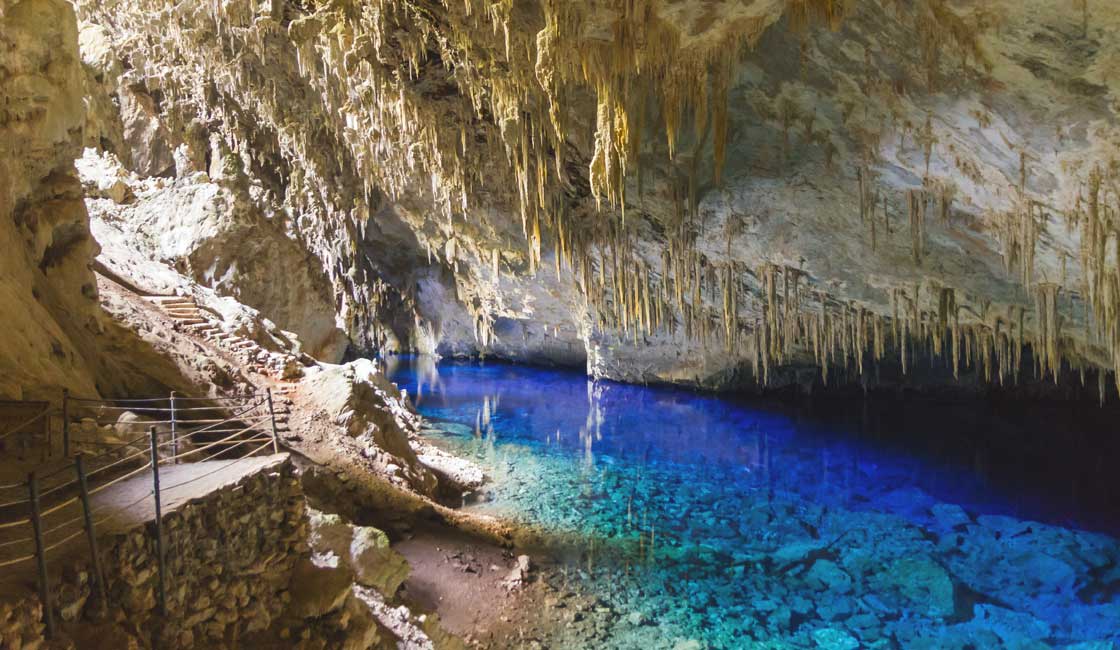
Clear Bonito waters
Bonito is the ecotourism capital of Brazil, and its stunning nature can be fully explored within the Serra da Bodoquena National Park. There are caves with lakes and amazing stalactite formations, lush forests, mountains, and grasslands, home to wildlife such as capybaras, and ocelots. You’ll also find beautiful waterfalls and incredibly clear rivers and pools alive with thriving shoals of tropical freshwater fish, while the skies above are graced by colorful parrots and macaws. You can go diving or rapelling in the Abismo Anhumas, a massive cave with dangling, rocky stalactites descending from its roof down towards an underground lake.
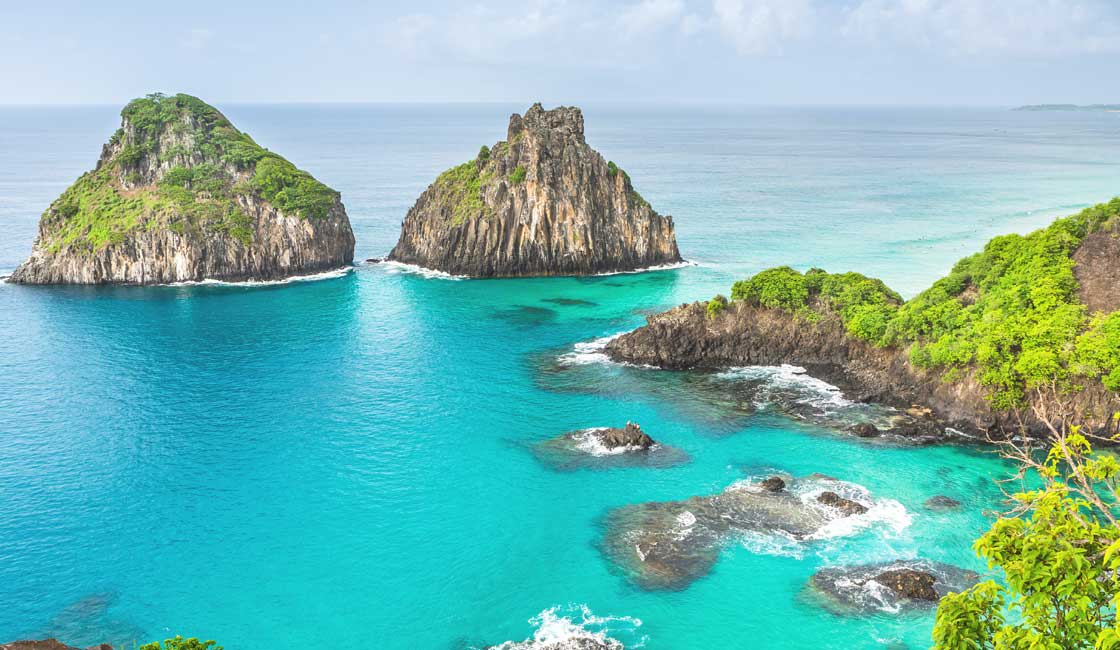
The turquoise waters
About 200 miles off the coast of Brazil’s mainland, Fernando de Noronha is a slice of paradise; a small volcanic collection of 21 islands characterized by jagged, rocky coasts and lovely natural beaches. Because of its distance from the mainland, Fernando de Noronha is very secluded and great efforts are made to preserve the natural wilderness of this beautiful place. The area is home to a diverse and rich ecosystem that includes dolphins, reef sharks, tropical fish, and rays, and is ideal for scuba diving and snorkeling.
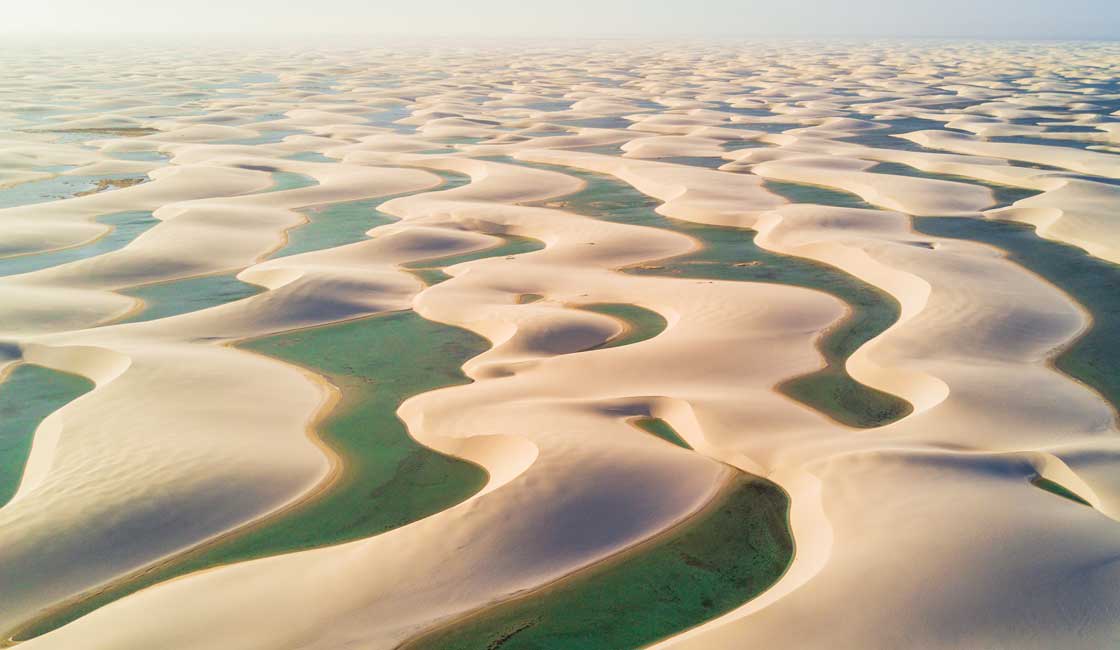
Endless dunes make amazing photos
On the northern coast of the Atlantic is Lençóis Maranhenses National Park, an immense area of desert-like land, which is known for its sloping white sand dunes that stretch tall and wide, and shallow rainwater lagoons that nestle between the valleys of the sandbanks. They form seasonally during the rainier seasons, due to a thick, hard, dense layer of rock not far beneath the sand. The lagoons are at their largest during the summer months, and after July, when they connect to rivers like the Negro River, there are even fish that live in the shallow pools.
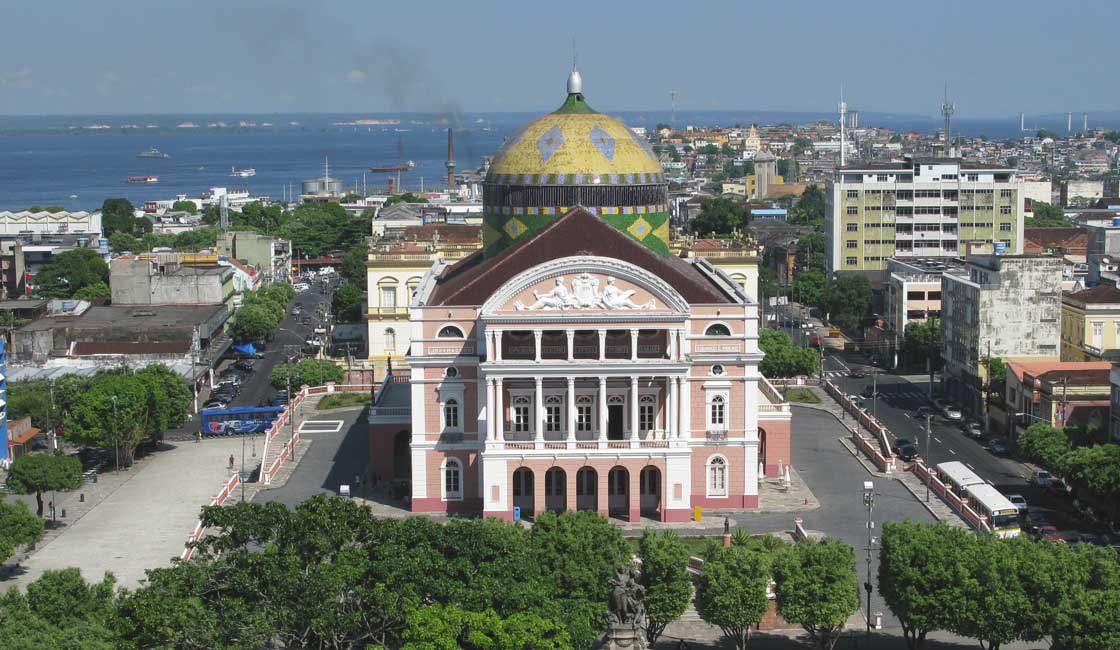
Teatro Amazonas
The capital of the Amazonas state in northwestern Brazil, Manaus serves as a gateway to the Amazon rainforest and embarkation point for most Brazilian Amazon cruises. The port is located on the dark waters of the Negro River, just east of where it meets the muddy waters of the Solimões River to form the mighty Amazon. This meeting point is known as the “Meeting of the Waters,” which is a natural phenomenon where the two rivers run side by side for nearly four miles without mixing.

Tribes of the Amazon
One of the most ecologically complex regions in the world, the Amazon rainforest, one of the best places to visit in Brazil, is an extraordinary natural wonder. The dense forest provides fertile grounds for thousands of endemic species, while the Amazon River is home to an incredible freshwater life, including the elusive pink river dolphins.
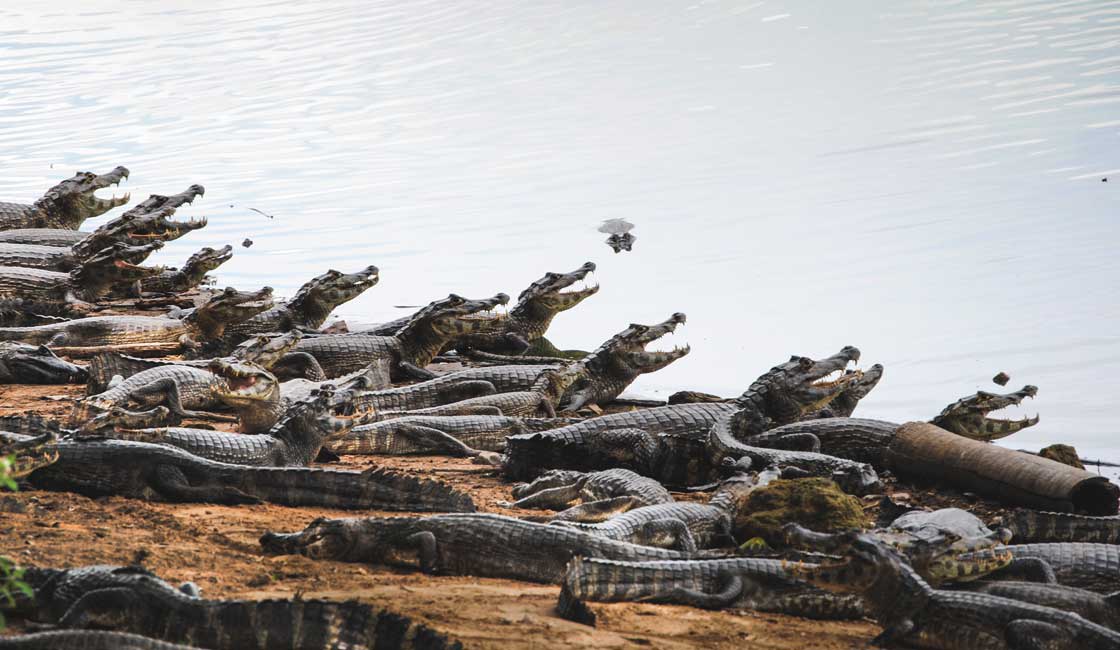
Caimans of Pantanal
Covering an extensive swathe of western Brazil, before sprawling into Bolivia and Paraguay, the Pantanal is a huge tropical wetland and wildlife haven rich in a diverse ecosystem of rare and wonderful creatures and an astounding array of flora. Here you can spot hundreds of species of birds, in addition to large mammals such as jaguars and capybaras. Some of the most famous residents are the thousands of caimans. During the rainy season, around 80 percent of the floodplains are submerged, so the only way to get around is by plane or boat.
Stretching across the center of Brazil, Chapada dos Veadeiros is a vast national park that lies atop an ancient rainforest-coated plateau. Scarred by jagged cliffs and deep crumbling canyons, hardy vegetation, sparkling lakes, and imposing quartz crystal formations, some of which are over a billion years old, the park is fascinating to hike around. Lots of dramatic waterfalls are hidden away among verdant flora and fauna, which includes several orchid species, macaws, jaguars, and armadillos. Other highlights include Moon Valley, which is a lunar landscape. Swimming and bathing in any one of the numerous waterfalls and rivers that dot the area is a must-do.
Jalapão State Park in the state of Tocantins, is an untouched wilderness known for its deep-orange dunes, raging rivers, and cascading waterfalls. The natural landscapes of ‘Cerrado’, the Brazilian savannah, features rivers, rock formations, and numerous species of fauna, such as jaguars, maned wolves, and macaws.
Just a short drive from Natal in the state of Rio Grande do Norte, the Genipabu dunes are an ever-changing collection of sand dunes, which are shaped and reshaped by the daily winds that come off the coastline and whip over the sands. You can slide down the sand dunes all day long, or you can raise your excitement level by taking a wild ride on a dune buggy. where experienced buggy drivers (bugueiros) will take you on a thrilling roller coaster ride around the wavy dunes.
With its crystal-clear waters and white, pristine beaches, Porta de Galinhas has deservedly earned the title of one of the most beautiful beaches in Brazil. When the tide comes in, the shoreline fills up with warm pools, locked between walls of coral and filled with a thriving ecosystem of marine life. If you’re into snorkeling, it’s possible to see marine turtles here, as well as seahorses.
Mount Roraima is an imposing tabletop mountain surrounded by sheer cliffs to create an island floating in the sky above the plains of the Gran Sabanais. It is one of the most mysterious and alluring mountains on Earth, and is said to be the inspiration for Sir Arthur Conan Doyle’s Novel, ‘The Lost World’. Mt Roraima extends across the borders of Brazil, Venezuela, and the less-explored Guyana.
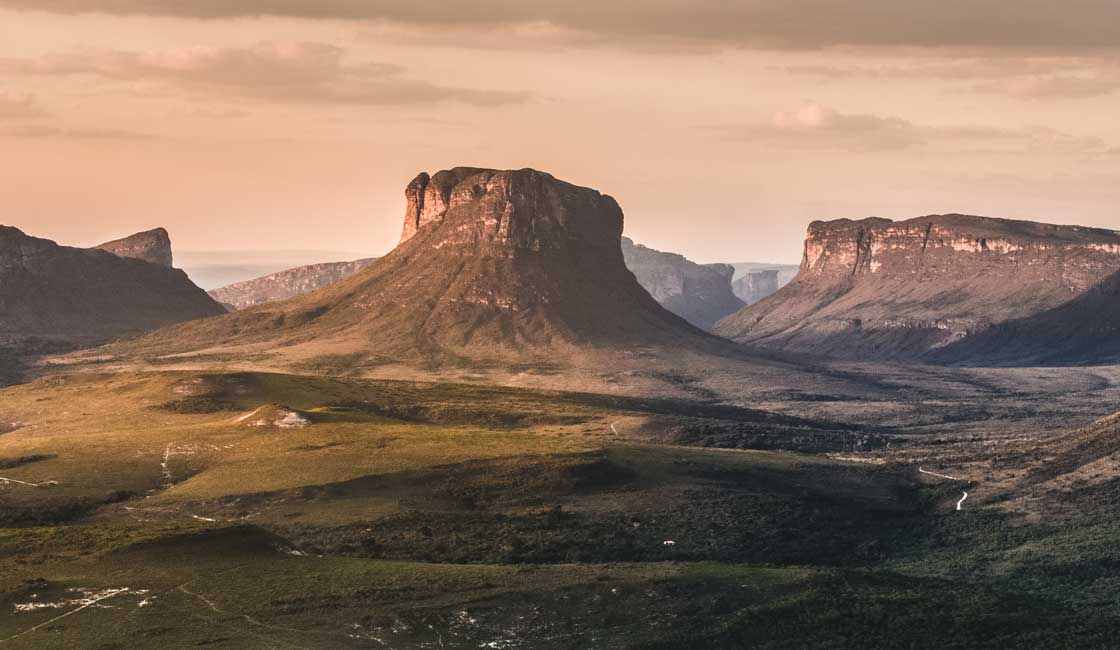
Rocky plains and canyons
Chapada Diamantina National Park lies in the northeast of Brazil in the center of the state of Bahia. The Park teems with an extraordinary range of biodiversity from rare orchids to large animals such as giant anteaters and armadillos. Crumbling, rugged cliffs line the plateau, as do cavernous caves and lots of epic waterfalls; the awe-inspiring 1250-ft-high Cachoeira da Fumaça is the second highest waterfall in Brazil. The spectacular mountain ranges and sweeping valleys, fast-flowing rivers, and large flat top rock formations with long, sloping plains beneath them, create breathtaking views and scenery.
While Rainforest Cruises aim to provide accurate and up-to-date information, we make no representations as to the accuracy or completeness of any information herein or found by following any link on this site. Rainforest Cruises cannot and will not accept responsibility for any omissions or inaccuracies, or for any consequences arising therefrom, including any losses, injuries, or damages resulting from the display or use of this information.




